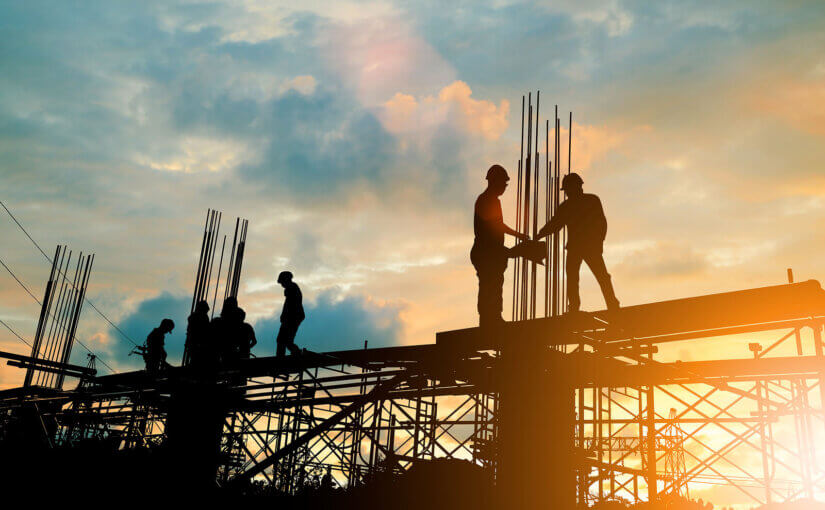The iconic 1932 photograph, “Lunch atop a Skyscraper,” might romanticise the daring feats of workers at height, but the risks remain very real. In 2023/24, 36% of the UK’s 138 worker fatalities resulted from falls from height, with half occurring in the construction industry.
Falls from height are the leading cause of fatal injuries in the workplace and can also result in injuries with life-altering consequences. Construction remains a high-risk sector, and robust on-site safety measures and strict adherence to regulations are essential to prevent further tragedy.
Fortunately, modern technology is transforming how we approach construction safety, offering solutions that were unimaginable two decades ago. Join us as we explore five groundbreaking innovations revolutionising safety for workers at height.
1. Virtual reality health and safety training
Virtual reality (VR) is transforming health and safety training in construction by offering workers an ultra-realistic, fully immersive 3D environment to explore. This technology bridges the gap between theoretical knowledge and practical experience. Trainees can safely make mistakes in a controlled environment, where the importance of adhering to health and safety guidelines is reinforced by demonstrating the realistic consequences of neglecting them.
GKR Scaffolding, a scaffolding and access company, uses VR to train its staff on high-risk scenarios. One powerful simulation in the company’s training schedule includes a worker failing to secure a ladder to scaffolding. The worker falls into a busy street where he’s hit by a car. Trainees witness the entire incident and aftermath: the mistake, the fall, the arrival of paramedics, and an emotional phone call to the worker’s wife after his death. The intensity of this simulation often leaves participants shocked and sparks deep conversations about the real-life consequences of on-site negligence.
VR construction technology can also be combined with building information modelling (BIM) to enhance site safety. This offers facilities managers like maintenance technicians and school caretakers the chance to familiarise themselves with a building’s layout before construction is complete. The extra time enables them to prepare for safety protocols and maintenance needs.
2. Extended Reality smart glasses
Extended Reality (XR) smart glasses are wearable technology for work at height and a game-changing solution in construction safety. These glasses provide hands-free access to crucial information without disrupting the wearer’s field of vision. By projecting information below the eye line, XR glasses enable workers to remain aware of their surroundings while accessing text, videos, images, and diagrams.
Paired with headsets that integrate with hard hats, XR smart glasses also enable seamless communication through voice and video calls and support apps like Microsoft Teams. This connectivity allows workers to collaborate in real-time.
XR smart glasses enhance construction site safety by keeping workers informed, reducing the need for additional personnel at height, and eliminating the need to return to the ground for information.
3. Semi-autonomous robots
The concept behind using semi-autonomous robots for tasks at height is simple: you remove the human risk factor when you replace them with robots. While the potential danger of a robot falling from height still needs to be managed, workers’ overall health and safety benefits are substantial.
Hilti’s Jaibot, a semi-autonomous drilling robot, is already making waves in the construction industry. Designed to drill precise holes for mechanical and electrical installations, Jaibot operates using pre-programmed coordinates, autonomously navigating worksites to perform tasks accurately. Using the Jaibot exposes human workers to significantly fewer risks, prevents them from inhaling harmful dust, and protects them from the dangers of hand-arm vibration.
The company continues innovating with the Jaibot to expand its capabilities to drill deeper holes and eventually operate in tunnel environments. This will reduce the need for human labour in other hazardous construction scenarios.
4. Drones with AI technology
Drones are trialled on construction sites as a cost-effective alternative to humans performing various tasks at height. These tasks range from measuring materials for quantity surveyors to conducting geotechnical surveys and identifying site hazards or structural issues.
Equipped with cameras, drones capture video or photo footage that can be processed and interpreted, often with the help of AI technology. Drones can quickly and safely survey a site, and AI can analyse the footage to flag potential problem areas. This allows human operatives to focus only on the flagged sections, significantly improving efficiency and reducing the need for workers to access dangerous heights unnecessarily.
When capturing footage, drones provide unprecedented views of buildings, allowing them to target specific areas of concern. For instance, a drone can be dispatched to inspect the area if a leak is suspected in a hard-to-reach location. Based on the footage obtained, a worker will only be deployed to investigate a specific area, reducing the time spent at height.
Less time spent working at height equals reduced risk and less opportunity for injury.
5. Harness safety technology
Nationwide Platforms’ Harness ON is an innovative safety system designed to enhance fall protection for workers using mobile elevating work platforms (MEWPs). This intelligent anchor point prevents an MEWP from operating until the worker securely attaches their harness carabiner.
Harness ON is integrated directly into the MEWP’s control system and permanently connected to the MEWP’s anchor point, ensuring the platform can only function when the worker is adequately secured. If the carabiner is unclipped at any point, the MEWP automatically ceases operation, adding an extra layer of safety.
This construction safety technology is quick, user-friendly, and compatible with all carabiner clips, harnesses, and machines. By enforcing safety harness use, Harness ON significantly reduces the risk of falls from height, ensuring that operatives remain securely tethered while they work.
